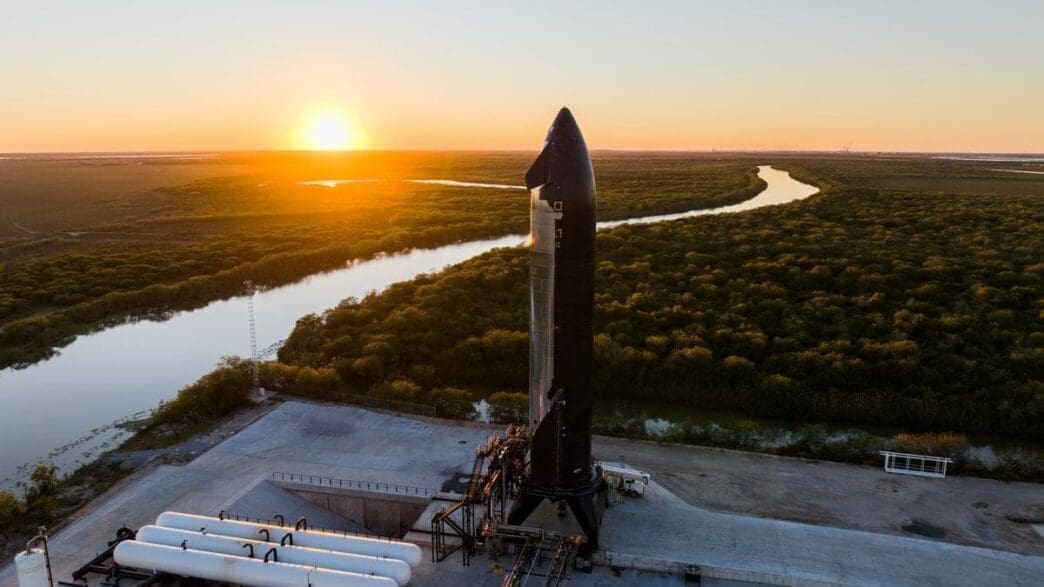SpaceX continues to make strides with its Starship rocket program, preparing the upper stage for its seventh launch test. Recent static fires of the Super Heavy booster have set the stage for this next phase of testing.
The anticipation for SpaceX’s upcoming Starship launch is mounting as the world’s most powerful rocket edges closer to its seventh test flight, expected in the next month. This follows a successful static fire of the Super Heavy first-stage booster, crucial for the upcoming tests.
Photos shared by SpaceX on social media platform X reveal the Starship upper stage in motion towards its test stand at the Starbase facility in South Texas. This progression marks a significant step in SpaceX’s efforts to demonstrate Starship’s readiness for the integrated test flight (IFT).
While SpaceX has not confirmed an exact date for IFT-7, an internal communication from NASA to the U.S. Federal Aviation Administration suggests January 11 as a potential target. The Starship vehicle, when fully assembled, will stand nearly 400 feet tall, emphasizing its stature as the tallest rocket in history.
The unique design of the Starship system includes the possibility for full reusability. Both its Super Heavy booster and the upper stage, referred to as “Ship,” are engineered to return to their respective launch sites. Remarkably, the launch tower’s “chopstick arms” are designed to capture these components mid-air.
Previous attempts to catch the Super Heavy booster were made during the IFT-5 launch in October, with a successful retrieval. However, during IFT-6 in November, communication issues with the tower resulted in the booster splashing down safely in the Gulf of Mexico instead.
Looking ahead, IFT-7 will represent SpaceX’s first Starship launch for 2025, following a year that saw four launches in March, June, October, and November respectively. This uptick in activity highlights SpaceX’s commitment to refining the technology and securing operational status for Starship.
NASA’s collaboration with SpaceX underscores the significance of Starship as it is slated to serve as the lunar lander for the Artemis 3 mission, aiming to return astronauts to the lunar surface. The success of these test flights and future operational launches are pivotal for upcoming NASA missions.
Public discussions around SpaceX’s approach often highlight its rapid testing cycle, allowing engineers to refine and improve the system iteratively. Some social media users have drawn parallels to the NASA Apollo era, but note that SpaceX’s private funding model allows them to bypass many bureaucratic hurdles.
SpaceX’s Starship program is rapidly progressing, showcasing a blend of cutting-edge technology and strategic testing. As the aerospace community watches closely, the next few months will be crucial in determining Starship’s role in shaping the future of space exploration.
Source: Space







